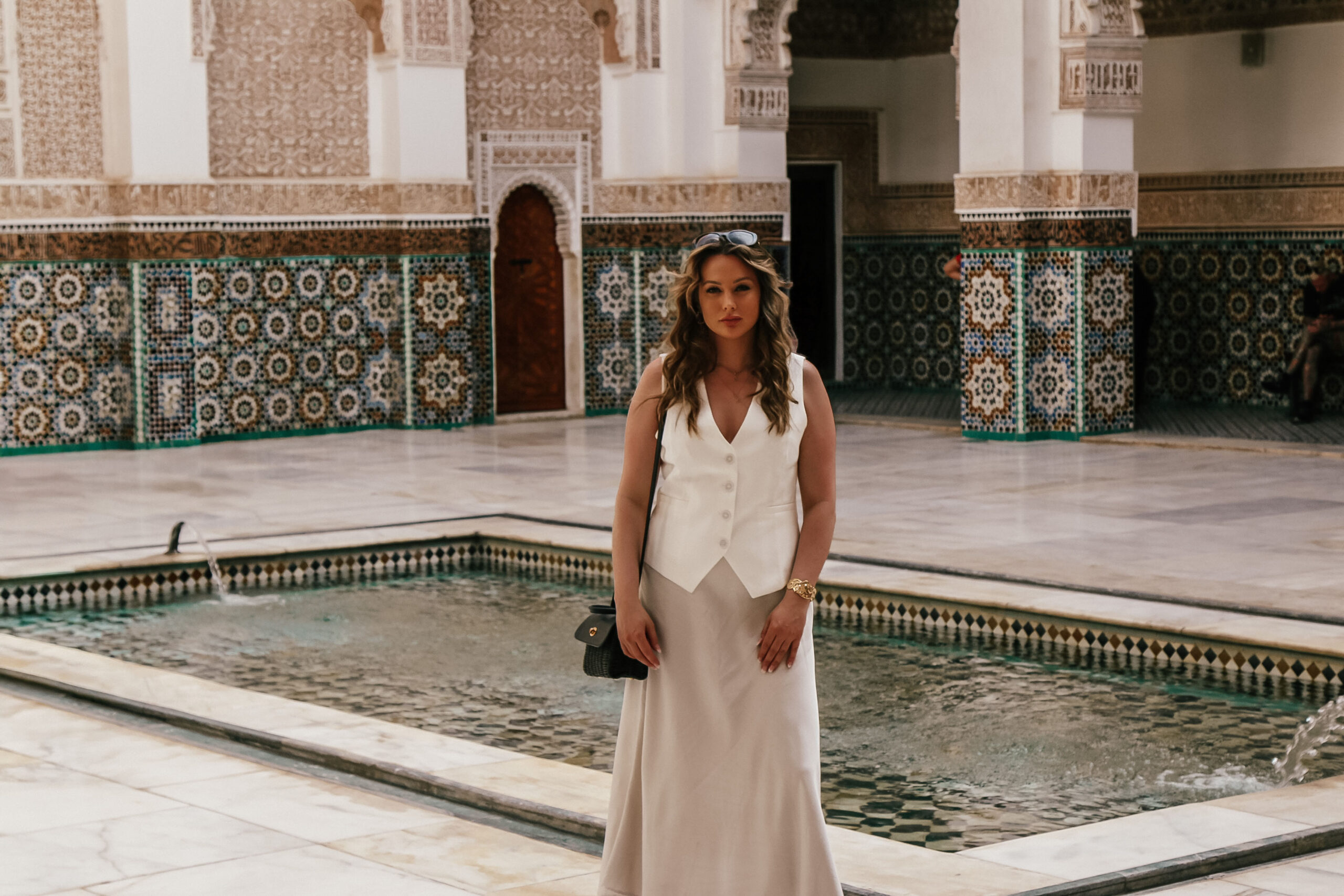Ben Youssef Medersa in Marrakech had been on my “to visit” list for a while. It was one of those places you discover online and instantly save, knowing deep down that photos won’t do it justice and you need to see it for yourself. So, after a few days of rest and reset in the hotel, I felt ready for something richer. So I left the comfort of my hotel, hopped in a taxi, and stepped into the city.
And I’ll tell you this: the old medina doesn’t greet you softly! It hits you all at once. Heat rises from the cobblestones. Motorbikes graze past your elbows. Snippets of conversation float through the air. It’s alive. Unapologetically so.
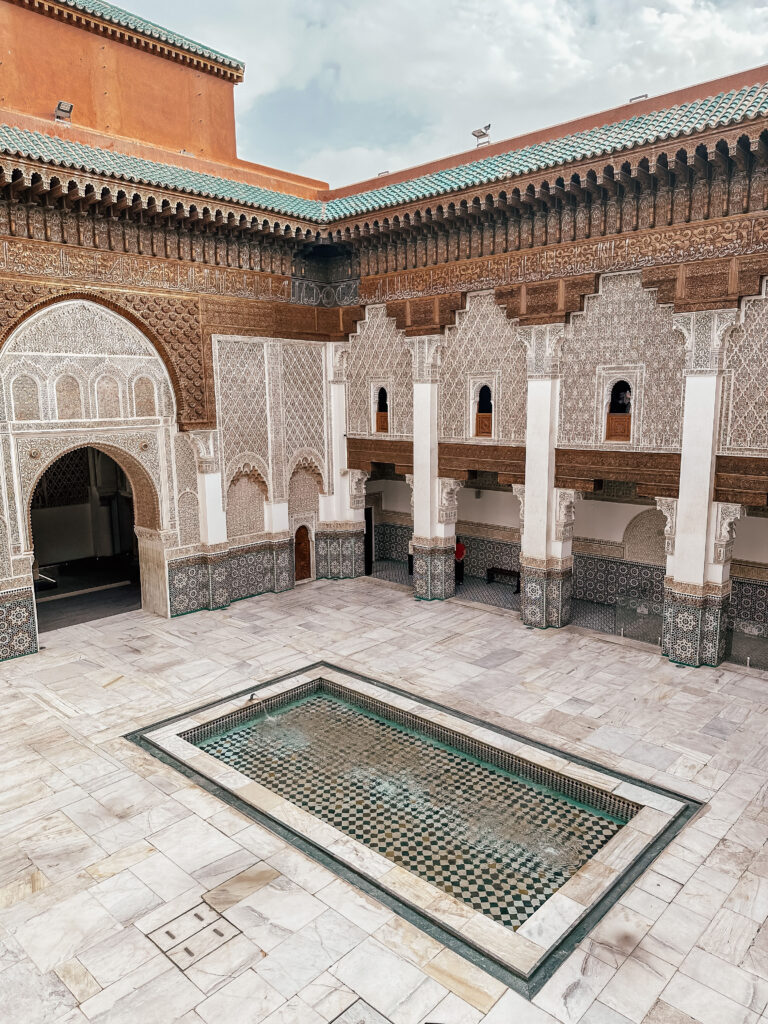
I eased myself in, meandering through its endless alleyways. Getting lost, more than once, (seriously, this place is labyrinthine). I ran my fingers along the soft leather, admired the intricate metalwork of the lamps, and stopped often to take it all in. It’s chaos, yes. But it’s curated chaos and even though it can be completely overstimulating, there’s so much beauty in the movement of life.
Eventually, I stepped out of the noise and into a quieter opening. Here, the light opened up above and the volume of the world dropped in half. I ducked into a small museum to escape the heat, wandered slowly through it, and then made my way toward the place I’d come out to see: Ben Youssef Medersa.
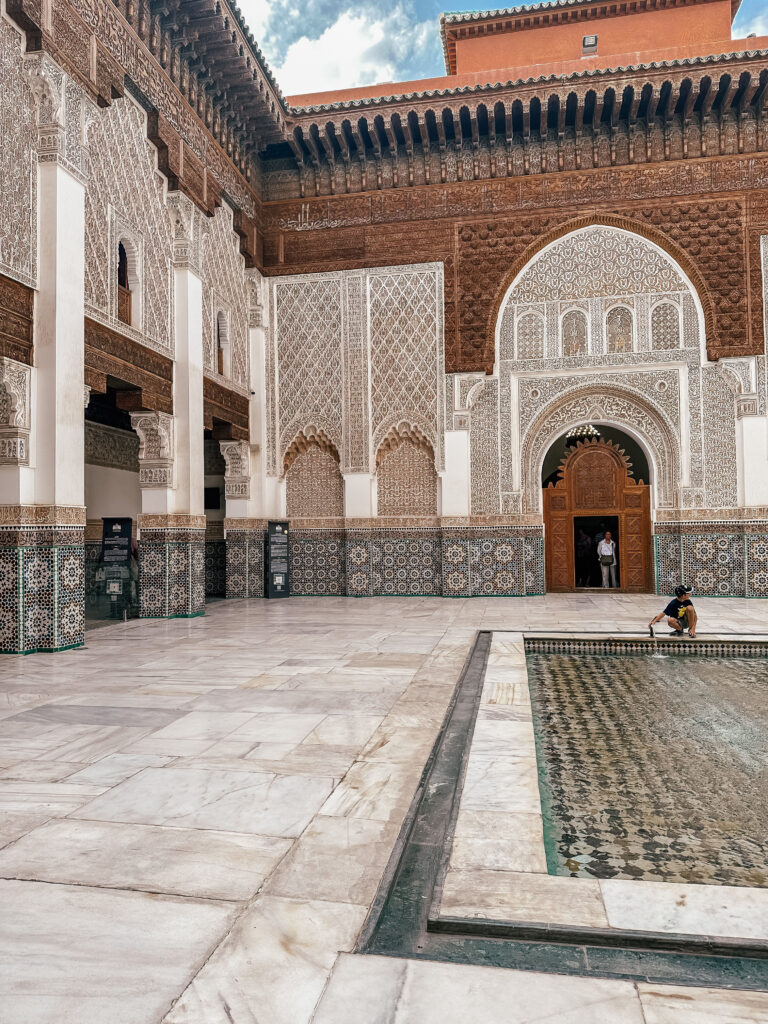
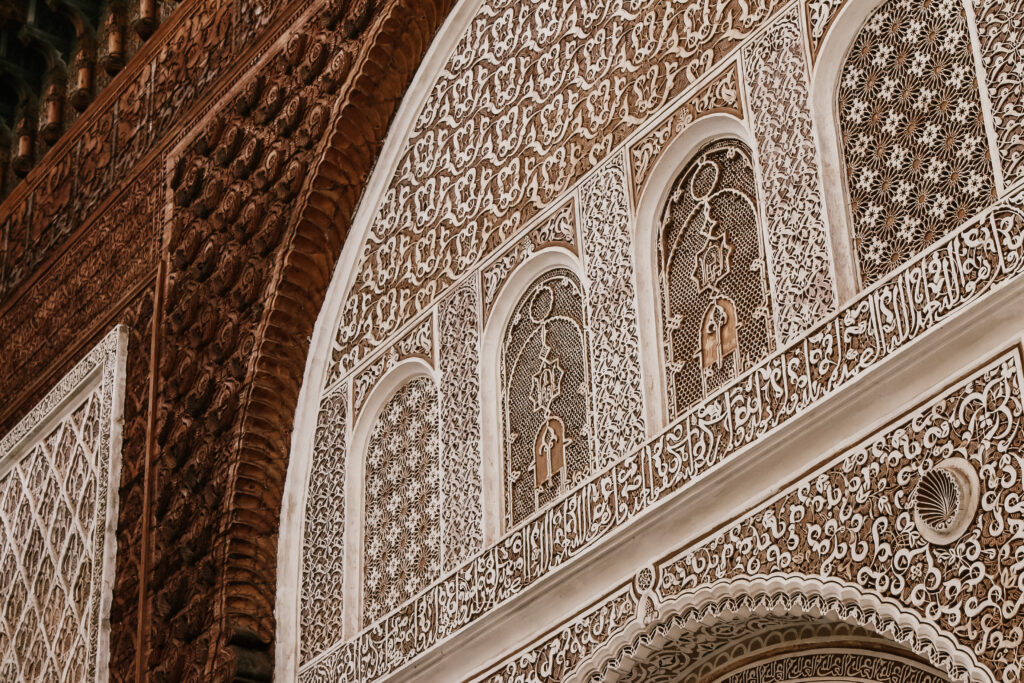
You know those places you see on Instagram and instantly think, I have to see this with my own eyes? This was one of them.
Once the largest Islamic college in North Africa, Ben Youssef Medersa offers a glimpse into Marrakech’s rich educational past. Built by Sultan Abdullah Al-Ghaleb Assaadi between 1564 and 1565, the Medersa operated for over four centuries, serving students eager to deepen their knowledge of religious sciences, philosophy, medicine, mathematics and more.
The space itself is simply beautiful.
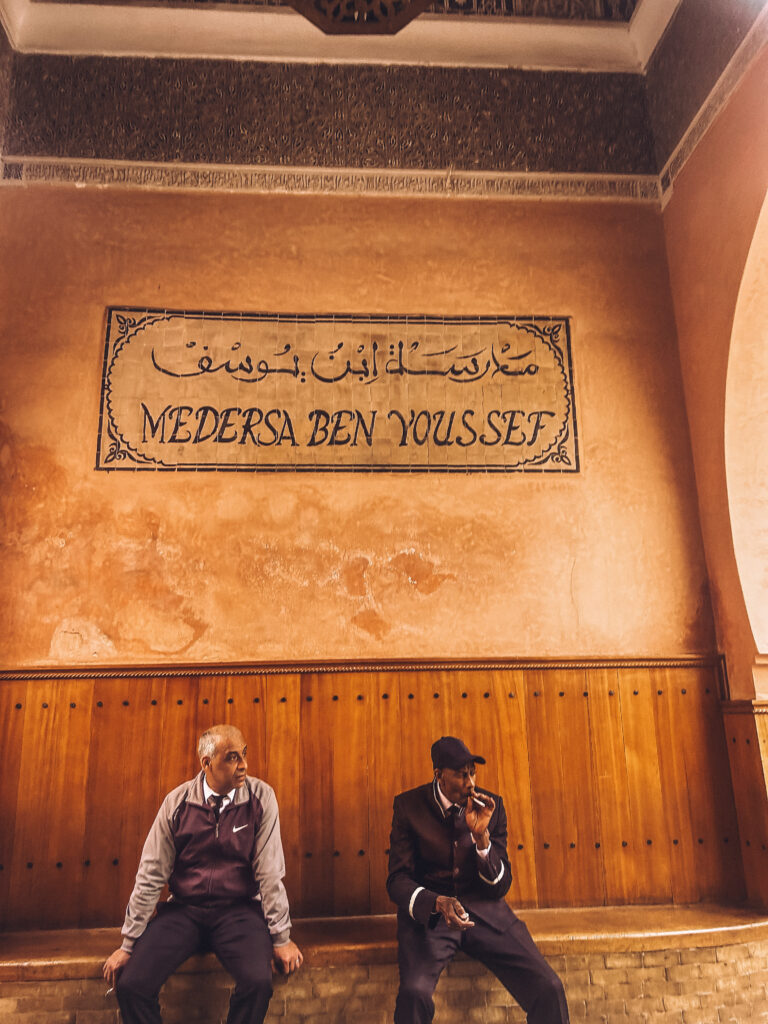
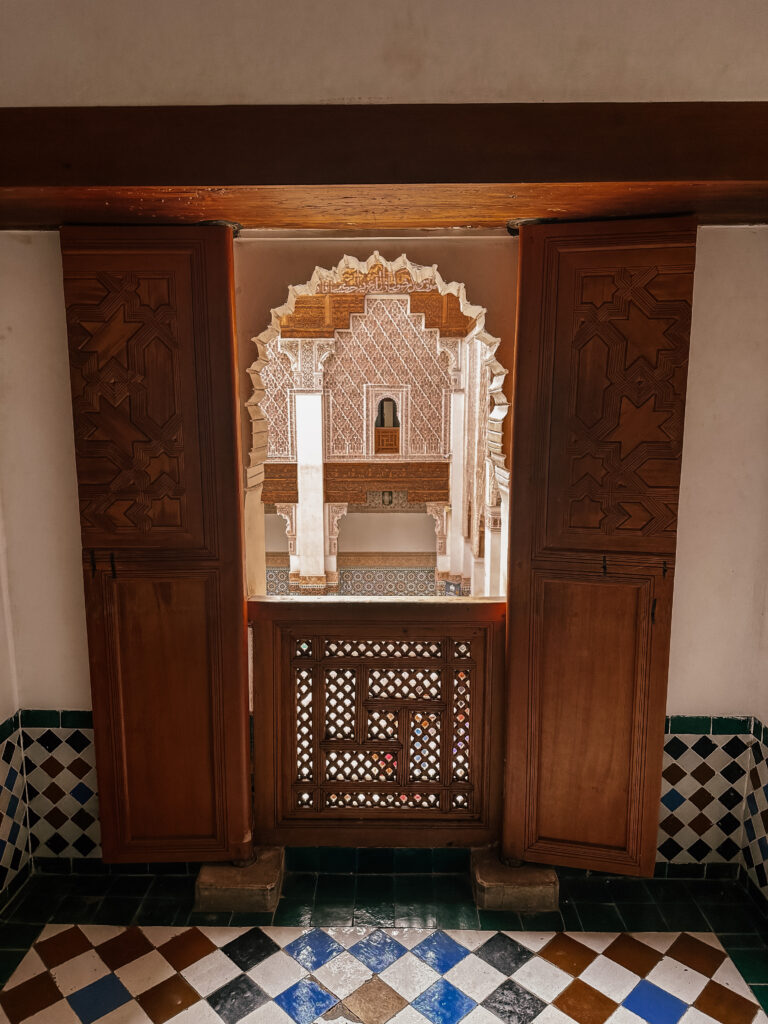
There’s precision in every detail and the central courtyard is a masterpiece. Geometric zellige tiles in green, blue, and white; Kufic script etched into stucco and carved cedarwood so intricate it looks like weaving. It doesn’t scream for your attention like the medina outside. It earns it, quietly.
There’s a huge contrast between the world you’ve just stepped out of and the one you find yourself in, in Ben Youssef Medersa. Here, everything feels intentional. Designed and placed not to overwhelm, but to centre. You can book a tour to learn more about the history, but I’ve always loved when buildings can live on, even if not for their original purpose. It’s strange how spaces that once held so much sound, with recitations, lectures, the rhythm of shared learning, can feel so quiet now. But maybe that’s why it works. It’s not silent in the way a museum is silent. It’s quiet in the way something deeply used and then carefully left behind can be. Like a memory held, only this one in stone.
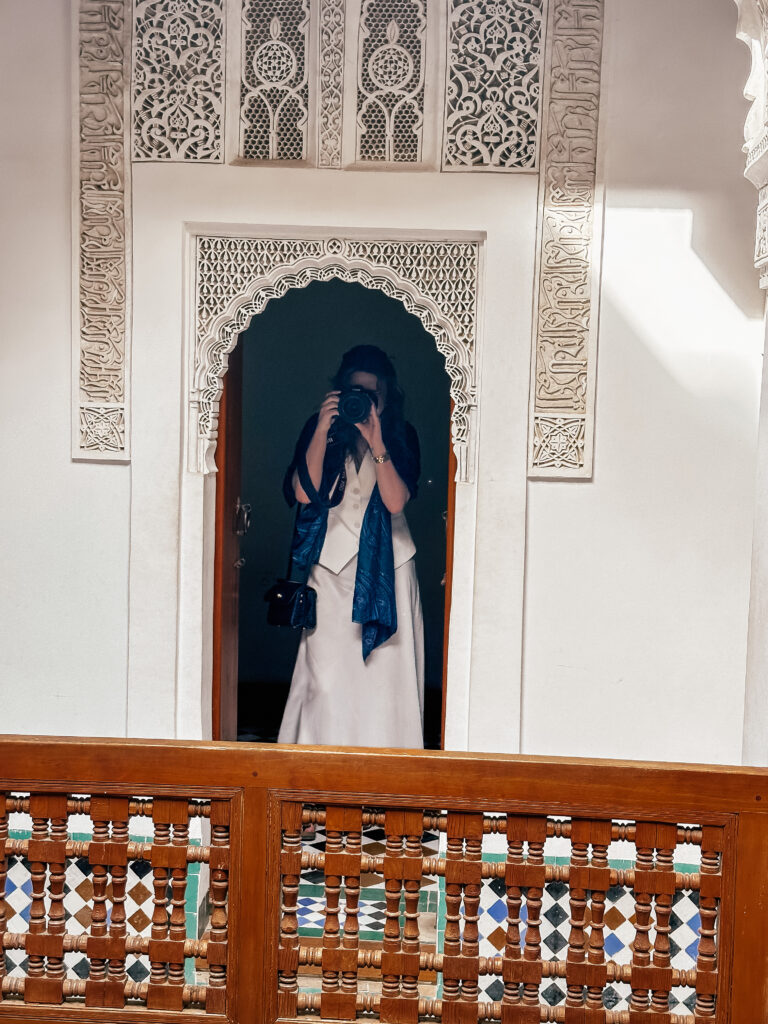
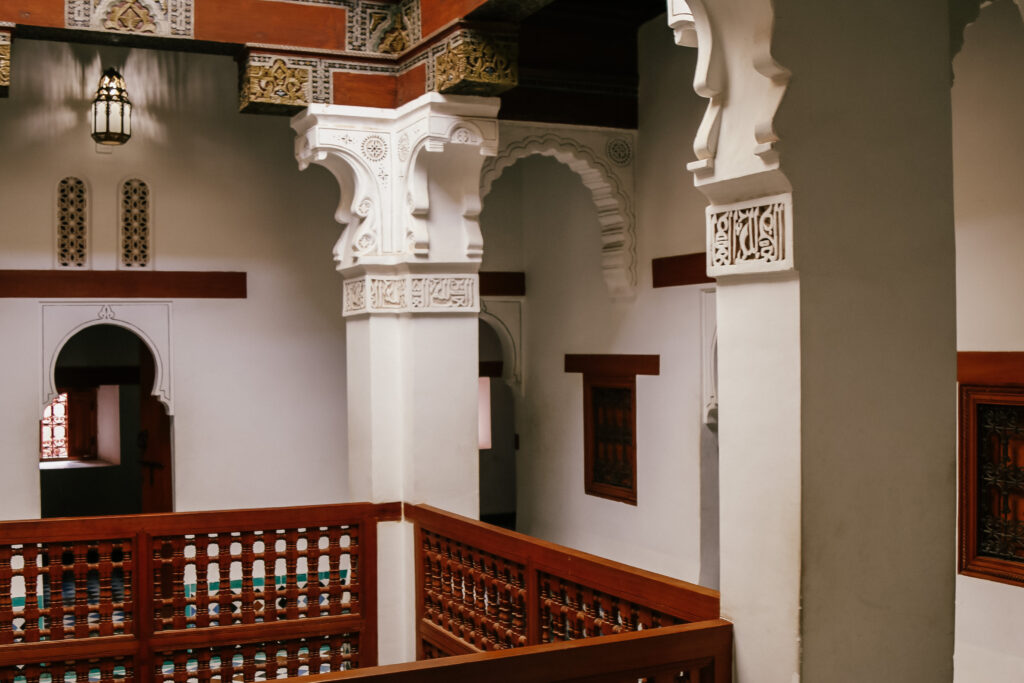
After picking my jaw up off the courtyard floor, I wandered upstairs to the students’ quarters. Small rooms, one after another, overlooking the courtyard below. Each one just big enough for a bedroll. The walls still show traces of marks, whether from the original students or from the footsteps of tourists, I’m not sure. But there’s something humbling about walking through them. Imagining the discipline. The solitude. The devotion to learning.
Eventually, it was time to step back into the madness of the souks and make my way to dinner. But I left with my head full of architecture and a deep sense of gratitude for the privilege to witness it.
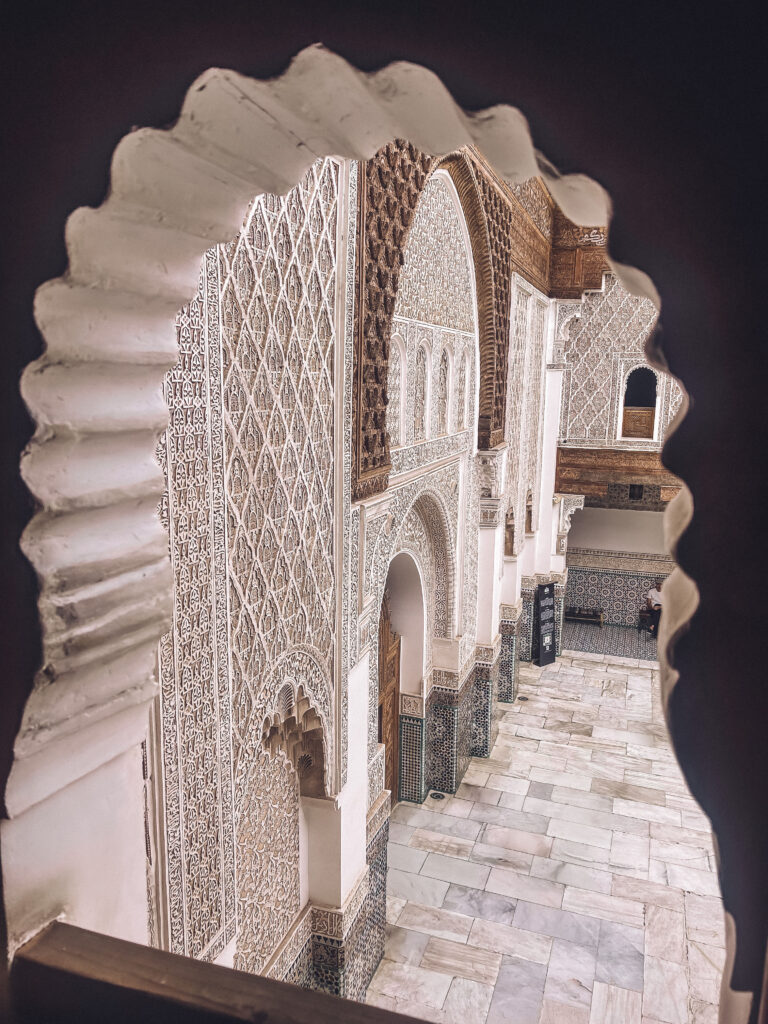
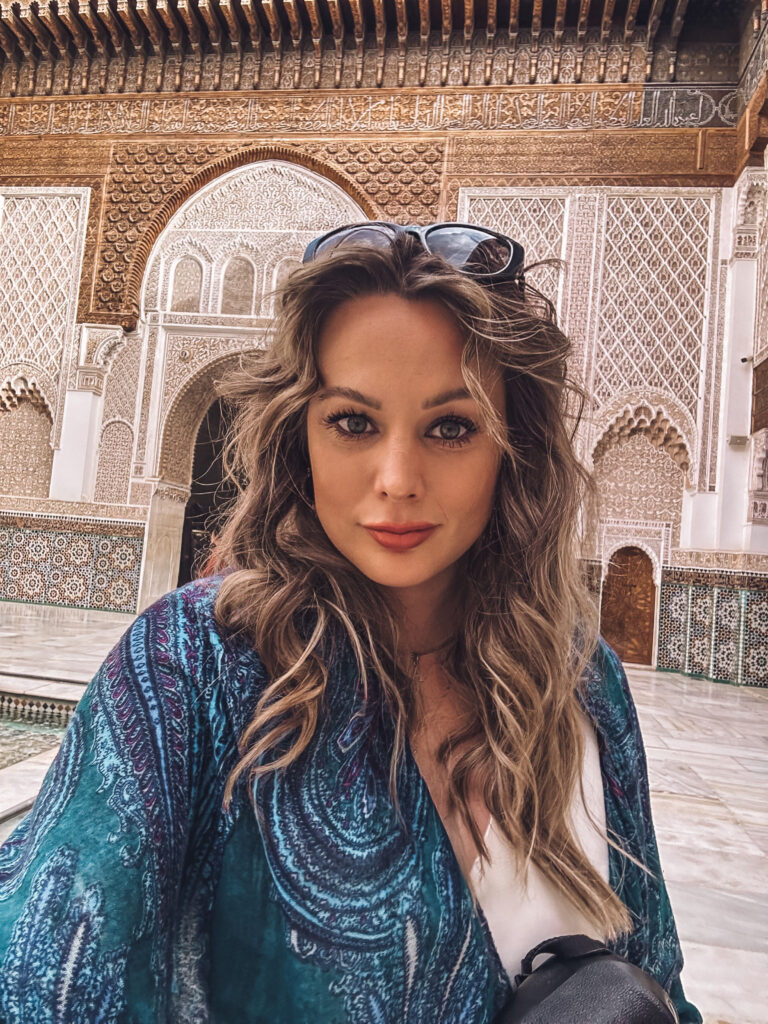
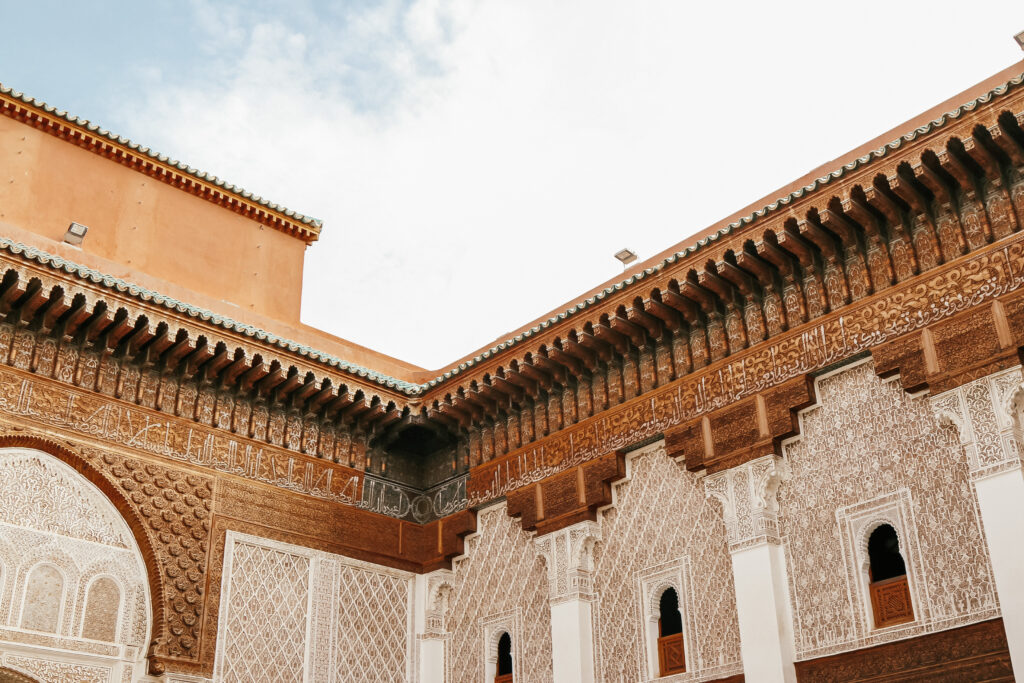
Travel is one of those things that constantly reminds you how much beauty there is left to see. And more often than not, how much beauty has been quietly waiting for centuries.
If you’re planning to visit Ben Youssef Medersa in Marrakech—
It’s located in the heart of the old medina, a short walk from the Marrakech Museum. Entry is 50 MAD (around £4). Go early in the day to avoid crowds and really absorb the stillness of the space. The museum next door is worth a quick stop too as it’s full of ceramics, paintings, and traditional Moroccan craftsmanship. Bring water, wear flat shoes, and give yourself permission to get lost on the way there—it’s part of the magic!
